
Hungarian Pavilion for the Shanghai Expo 2010 by Tamás Lévai
Hungary will represent the project of Tamás Lávai at the World Expo 2010 in Shanghai next year. The centerpiece of the exhibit is a two-meter plastic object Gömböc, which looks like a crumpled ball and gets its name from a Hungarian dumpling. Gömböc is the first known homogeneous three-dimensional object with one stable and one unstable equilibrium point, thus having a total of two centers of mass. The authors of Gömböc are two Hungarian mathematicians, Gábor Domokos and Péter Várkony. In addition to one point to which it always returns, Gömböc has another, so-called unstable point: it is theoretically possible to balance the object carefully at this point, but the slightest nudge will tip it over again, and it will return to the stable position. As has often been the case in history, inspiration came from the natural world. In this case, mathematicians took inspiration from a turtle's shell.
The pavilion made of wooden sticks is meant to illustrate the complex journey in discovering Gömböc. The immaterial nature of the invention is evoked by immaterial means: space, light, and sound. Info>
EMPTY SPACE - GÖMBÖC, as a distinguished pebble analogy, helps to understand empty space and to recognize its uniqueness and greatness. In order to represent it in architecture, we had to combine features that are used by both mathematics and architecture: homogeneity, abstraction, dynamics, and playfulness. The buffer space behaves like a wood opening, being created from a three-dimensional matrix of vertically moving wooden sound tubes. The phenomenon as a whole can only be seen in our mind, mainly as a play of light and shadows while moving in space.
NATURAL LIGHTS - The sunshine is reflected on the light, glossy floor and illuminates the entire structure from beneath. Outside there would be a pipe structure, functioning as a ‘curtain’, in which water is circulated with air bells.
ARTIFICIAL LIGHTS - Light sources are built into the wooden sound tubes like stars in the sky.
SOUNDS - The wooden installation in itself is like a musical instrument, the tubes are sound-boxes.
AFTERLIFE OF THE ARCHITECTURAL INSTALLATION - The appearing elements in the exhibition space constitute a harmonic unity, embodying the phenomenon that is created through the structure; it raises the opportunity of an open-air exhibition with the moving light-sound-space, as a synthesis of nature.
The pavilion made of wooden sticks is meant to illustrate the complex journey in discovering Gömböc. The immaterial nature of the invention is evoked by immaterial means: space, light, and sound. Info>
EMPTY SPACE - GÖMBÖC, as a distinguished pebble analogy, helps to understand empty space and to recognize its uniqueness and greatness. In order to represent it in architecture, we had to combine features that are used by both mathematics and architecture: homogeneity, abstraction, dynamics, and playfulness. The buffer space behaves like a wood opening, being created from a three-dimensional matrix of vertically moving wooden sound tubes. The phenomenon as a whole can only be seen in our mind, mainly as a play of light and shadows while moving in space.
NATURAL LIGHTS - The sunshine is reflected on the light, glossy floor and illuminates the entire structure from beneath. Outside there would be a pipe structure, functioning as a ‘curtain’, in which water is circulated with air bells.
ARTIFICIAL LIGHTS - Light sources are built into the wooden sound tubes like stars in the sky.
SOUNDS - The wooden installation in itself is like a musical instrument, the tubes are sound-boxes.
AFTERLIFE OF THE ARCHITECTURAL INSTALLATION - The appearing elements in the exhibition space constitute a harmonic unity, embodying the phenomenon that is created through the structure; it raises the opportunity of an open-air exhibition with the moving light-sound-space, as a synthesis of nature.
The English translation is powered by AI tool. Switch to Czech to view the original text source.
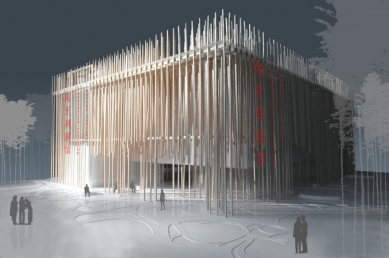
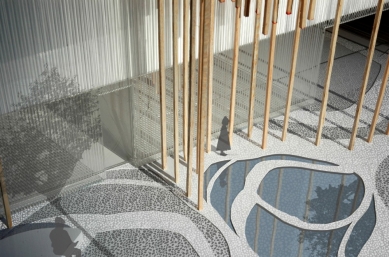
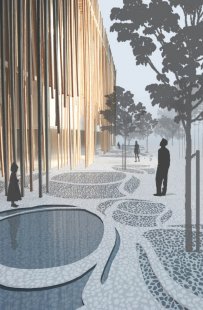
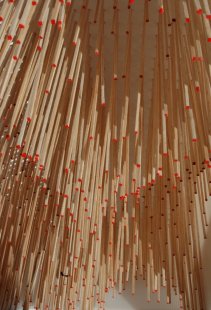
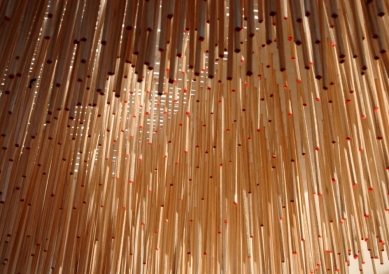
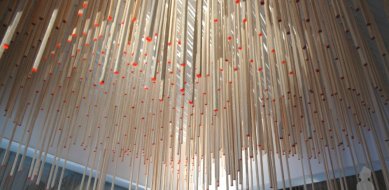
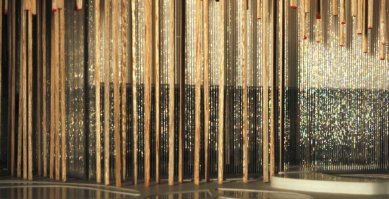
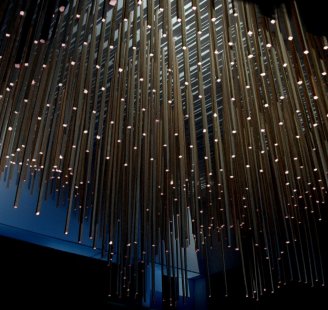
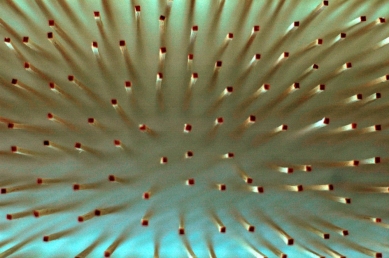
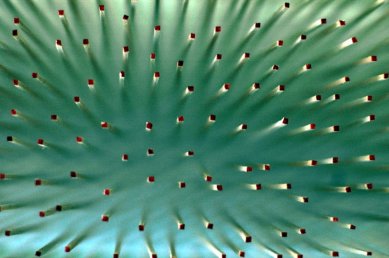
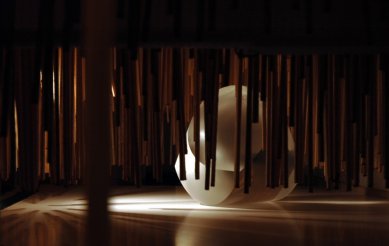
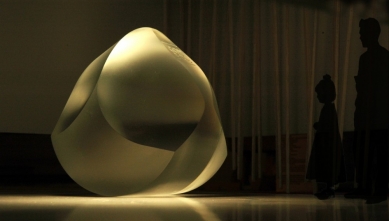
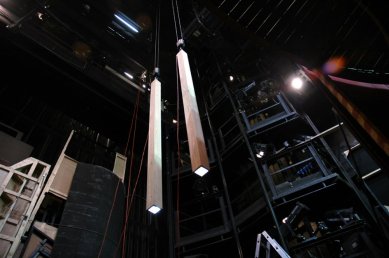
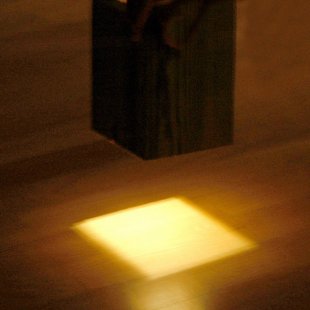
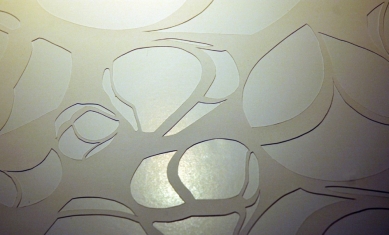
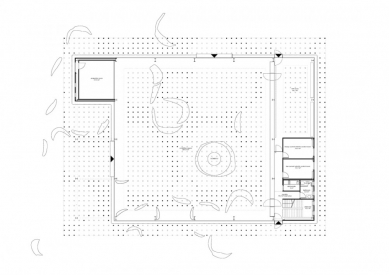
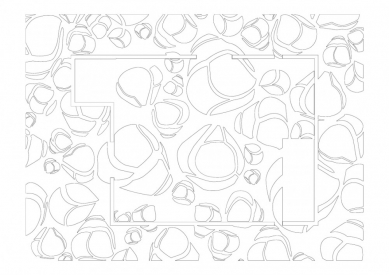
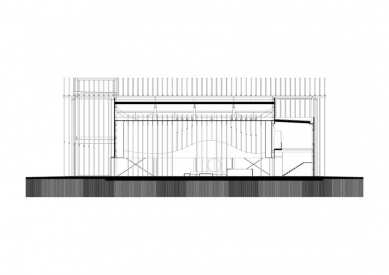
0 comments
add comment
Related articles
0
31.12.2010 | Shanghai wants to preserve five foreign pavilions from Expo 2010
0
25.03.2010 | Austrian Pavilion for Shanghai EXPO 2010 by SPAN
0
05.12.2009 | Spanish pavilion for Shanghai Expo 2010 by EMBT
0
22.11.2009 | Finnish pavilion for the Shanghai Expo 2010 by JKMM Architects
0
21.11.2009 | Italian Pavilion for the Shanghai Expo 2010 by Iodice Architetti
0
21.11.2009 | SAE pavilion for the Shanghai Expo 2010 by Foster + Partners
0
20.11.2009 | Danish Pavilion for the Shanghai Expo 2010 by BIG
0
19.11.2009 | Polish pavilion for the Shanghai Expo 2010 by WWA architects
0
18.11.2009 | German pavilion for the Shanghai Expo 2010 by Schmidhuber + Kaindl
0
17.11.2009 | Switzerland Pavilion for Expo 2010 Shanghai by Buchner Bründler
1
16.11.2009 | British pavilion for the Shanghai Expo 2010 by Thomas Heatherwick












